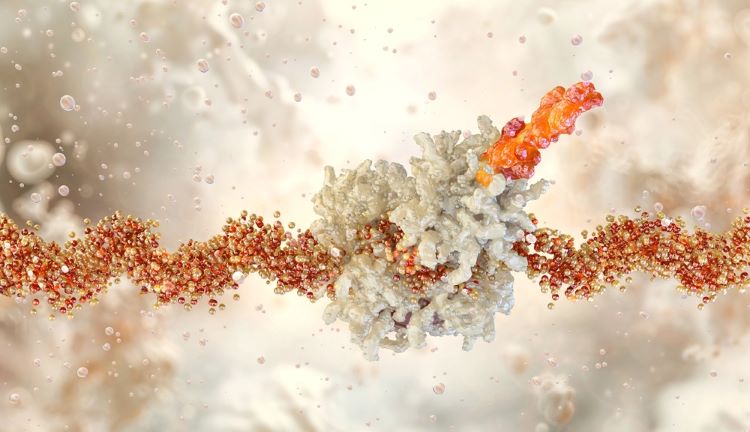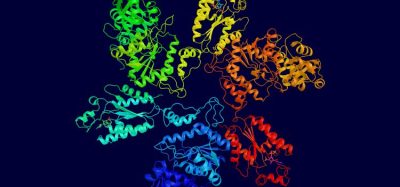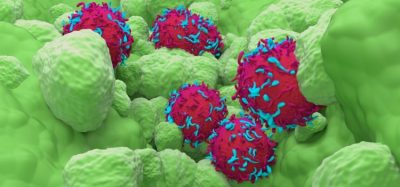Navigating evolving clinical and regulatory expectations as mRNA outgrows its vaccine roots
Posted: 26 September 2025 | Jianbo Diao (WuXi AppTec) | No comments yet
Jianbo Diao, PhD, Director of Bioanalytical Services, WuXi AppTec, discusses the importance for mRNA therapy developers of adopting precise and flexible analytical strategies for future pipeline success.


Messenger RNA (mRNA) technologies are rapidly redefining the boundaries of modern drug development. Initially recognised for their role in vaccines, mRNA platforms are now advancing into therapeutic areas including oncology, rare genetic disorders and metabolic diseases. These applications go far beyond transient immune stimulation, demanding sustained and systemic activity, precise expression control and robust safety profiles.
The shift from localised, prophylactic vaccine use to systemic, chronic treatment introduces scientific, regulatory and operational complexities. Pharmacokinetic (PK) and biodistribution profiles must be re-evaluated. Immunogenicity and stability must be carefully managed, particularly with repeated dosing regimens. And most importantly, developers must ensure the therapeutic protein is not only produced but also expressed at levels sufficient to deliver a meaningful clinical outcome.¹ Each of these parameters requires sophisticated, multi-platform analytical strategies that are technically rigorous and comply with regulatory demands.
Today’s mRNA therapies are being developed with increasingly diverse delivery systems, including lipid nanoparticles (LNPs), polymers and peptides. The complexity of these formulations, combined with the fragile nature of mRNA itself, underscores the need for thoughtful study design, integrated analytical tools and custom approaches aligned with each drug candidate’s mechanism of action.
The new frontier for mRNA therapeutics
To meet regulatory and clinical expectations, scientists must adapt bioanalytical strategies to address the complexities of mRNA-based products”
Modern mRNA platforms are being engineered for therapeutic protein expression, immune modulation and other advanced applications. These approaches are gaining traction where traditional small molecule or recombinant protein therapies have struggled, due to mRNA’s modularity and programmability. Therapeutic formats now include neoantigen-based oncology vaccines, enzyme replacement strategies and other advanced constructs – all of which require precise bioanalytical support to guide development.
Moderna opens UK’s first mRNA vaccine manufacturing facility
To meet regulatory and clinical expectations, scientists must adapt bioanalytical strategies to address the complexities of mRNA-based products.
Pharmacokinetics
Unlike localised vaccine administration, delivering therapeutic mRNAs requires a detailed understanding of tissue distribution, expression kinetics and persistence. Bioanalytical platforms such as RT-qPCR, ddPCR and bDNA assays are essential for quantifying mRNA and its expression kinetics. In situ hybridisation and imaging technologies for spatial distribution may complement quantification, while LC-MS/MS may be used to characterise lipid nanoparticle (LNP) components.²
Immunogenicity
Chronic or repeated dosing of mRNA therapeutics raises concerns over innate and adaptive immune activation. Reducing immunogenicity begins with optimising mRNA structure,incorporating modified nucleotides (including N1-methylpseudouridine) and refining LNP formulations.
From an analytical perspective, assessing immunogenicity requires a combination of ELISA, MSD and Luminex platforms for humoral responses, and ELISpot or flow cytometry for cellular responses. When multiple expression products are involved, multiplexed immunogenicity methods must be customised to each protein target.²,³
PEGylated lipids, commonly used in LNPs, have also been associated with accelerated blood clearance (ABC) upon repeated administration. This effect can compromise therapeutic consistency and must be monitored through immunogenicity and PK analysis in both preclinical and clinical settings.
Expression analysis
A central measure of mRNA therapeutic success is accurately and reproducibly quantifying encoded protein expressions. This varies widely by therapeutic class, whether secreted proteins, membrane-bound receptors, or processed neoantigen peptides.
Expression analysis is complicated by the transient nature of mRNA expression and the varied half-lives of expressed proteins. In some cases, self-amplifying or circular RNA constructs may be used to extend expression.4 Assay development must account for temporal variation and ensure sensitivity across a relevant biological timeframe. As these analytical techniques evolve, they provide an essential foundation for robust regulatory submissions and risk-based development strategies.
Navigating regulatory expectations
In the absence of harmonised global regulations for mRNA therapeutics, developers must rely on existing guidelines for biologics, gene therapies and nucleic acid-based products while adapting them to the unique features of mRNA platforms. Regulators periodically issue drug-specific guidance, particularly in relation to biodistribution, immunogenicity and the use of novel excipients or delivery vehicles like LNPs.
To streamline regulatory interactions and avoid delays, drug developers and sponsors should prioritise early engagement with regulatory bodies via pre-IND or CTA meetings to align expectations for analytical methods, data requirements and safety strategies. Where applicable, they may reference established data from related mRNA constructs to support analytical method validation, manufacturing comparability, or toxicology bridging studies.
It is equally important to provide clear characterisation and justification for any novel excipients, LNP compositions or manufacturing process elements. These components are essential to therapeutic performance and may elicit additional regulatory scrutiny, especially if limited precedent exists.
Risk-based frameworks can also be developed to guide bioanalytical strategy. These frameworks must consider the drug’s expression profile, route of administration, dosing frequency and patient population. A tailored, evidence-driven approach to study design and regulatory engagement can improve predictability and reduce the likelihood of late-stage setbacks.
As mRNA therapeutics continue to evolve, strategic foresight will be essential for translating innovation into viable clinical products”
Given mRNA’s dynamic landscape, maintaining awareness of evolving regulatory expectations is essential. Participating in public consultations and engaging with industry consortia, academic researchers and regulatory authorities can provide valuable insight. By treating regulatory strategy as a proactive and integrated element of development – not a reactive or isolated task – developers can position their programmes for accelerated progress and stronger regulatory confidence.
The future of mRNA therapeutics
As mRNA therapeutics continue to evolve, strategic foresight will be essential for translating innovation into viable clinical products. While the scientific foundation for these therapies is strong, success in development and regulatory approval depends on the ability to anticipate and navigate emerging challenges. Developers must look beyond individual studies and adopt a systems-level view: integrating bioanalytical rigour, delivery optimisation and regulatory alignment in all stages of development.
These strategic priorities can serve as guidelines for those advancing mRNA pipelines:
- Stability: Codon optimisation and structural engineering can improve expression duration and translation efficiency. Enhancing the 5’ cap, 3’ poly(A) tail, and UTR regions are proven strategies for boosting stability.5
- Targeted delivery: Next-generation LNPs and peptide carriers offer promise in improving biodistribution and tissue specificity. Ionisable lipids are especially important for endosomal escape and must be selected for low cytotoxicity and high efficacy.
- Analytical rigour: Orthogonal validation of mRNA presence, expression and immune impact is essential for clinical progression. Techniques like dual-platform verification (eg, RT-qPCR + ISH) can reduce false positives and increase regulatory confidence.²
- Regulatory strategy: Engage early with regulatory bodies and develop platform-aligned documentation that anticipates emerging expectations. A flexible, modular dossier format may help accommodate updates as the field evolves.
A final word: mRNA therapies across disease areas
mRNA therapeutics are no longer an experimental outlier, they are a rapidly advancing modality with the potential to transform treatment across disease areas. As use cases become more sophisticated and systemic, the need for precise, validated, and flexible analytical strategies will only grow.
Drug developers and sponsors must understand the nuanced interactions between formulation, delivery, immunogenicity and expression. In doing so, they position themselves not only for successful IND or CTA submissions, but for meaningful therapeutic impact in an expanding range of clinical applications.
References
- Rohner E, Yang R, Foo KS, et al. Unlocking The Promise of mRNA Therapeutics. Nat Biotechnol. 2022; 40(11):1586–1600.
- Hawthorne G, et al. Overcoming Analytical Challenges to Generate Data Critical to Understanding Lipid Nanoparticle-Delivered Modified mRNA Biodistribution. Bioanalysis. 2019; 11(21):1993–2001.
- Karikó K, Buckstein M, Ni H, et al. Suppression of RNA Recognition by Toll-Like Receptors: The Impact Of Nucleoside Modification and the Evolutionary Origin Of RNA. Immunity. 2005; 23(2):165–175.
- Rohner E, Yang R, Foo KS, et al. Unlocking the Promise Of mRNA Therapeutics. Nat Biotechnol. 2022; 40(11):1586–1600.
- Arnold TE, Yu J, Belasco JG. mRNA Stabilization by the ompA 5′ Untranslated Region: Two Protective Elements Hinder Distinct Pathways for mRNA Degradation. RNA. 1998; 4(3):319–330.


Dr Diao has published 15+ peer-reviewed papers and obtained his Bachelor’s degree in the Department of Biotechnology at Zhejiang University and a PhD at the Life Sciences College of Peking University. In 2004, he completed a postdoctoral fellowship in the Department of Biology at Purdue University. After that, he worked at Fudan University as an associate professor. In 2019, Dr Diao joined the Department of Bioanalysis (BAS) at WuXi AppTec, Shanghai.









